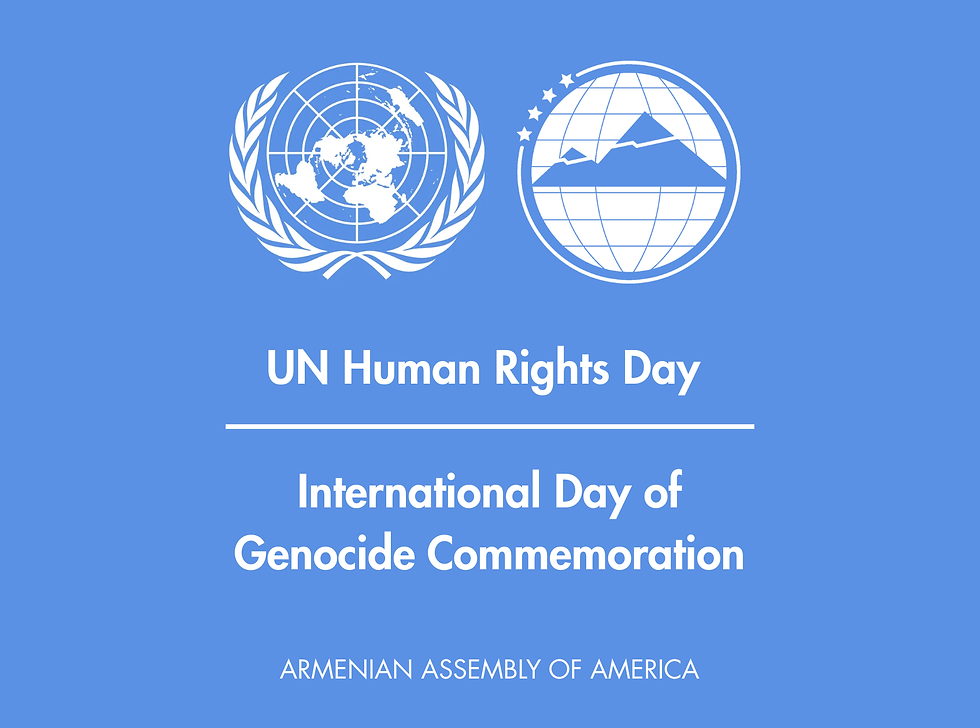Amb. Mills Unveils US State Dep.-Funded Armenian Cultural Preservation Projects in Gyumri, Dashtadem
- Armenian Assembly of America

- Nov 10, 2015
- 3 min read
Updated: Jul 15, 2021
From artistic renderings of the splendor of the Armenian countryside to the stark beauty of ancient fortresses, heritage sites and cultural treasures hold deep meaning for the Armenian people. On November 9, 2015, U.S. Ambassador to Armenian Richard Mills, Jr. had the opportunity to visit important pieces of Armenian cultural heritage in Gyumri and Dashtadem, where he unveiled two of the latest projects funded by the U.S. Ambassador’s Fund for Cultural Preservation.
“We are all connected by our shared history, our shared human story. By understanding and respecting Armenian history, we can celebrate our present connections and build our common future,” Ambassador Mills said.
This year, work is being completed on three major projects selected by the U.S. Ambassador’s Fund for Cultural Preservation (AFCP): the renovation of Rafayel Atoyan’s “On the Way to the Watermill” mural, the excavation and restoration of the Dashtadem Fortress complex, and work to safeguard significant archeological finds in the Areni Cave. In total, the AFCP provided almost $200,000 for all three projects.
“It has been more than a year of painstaking, detailed restoration work at all three sites. Now the Armenian people will see the benefit of this investment,” said Ambassador Mills as he unveiled the Atoyan mural and opened the Dashtadem complex. The work at Areni Cave will be unveiled at a later date.
The public presentation of these AFCP sites coincides with Ambassador Mills’ month-long focus on rural development. By preserving such sites, he said, tourists will be more likely to visit areas outside of Yerevan and help build a more diverse rural economy.
“There are so many great examples of cultural and historical heritage in rural Armenia. By working with our Armenian partners to preserve these sites and this mural, we are helping to promote tourism in the regions, which will boost economic development,” Ambassador Mills emphasized.

Rafayel Atoyan’s “On the Way to the Watermill” was in danger of disintegration, as the abandoned building was slowly crumbling around it. Now, thanks to the U.S. Ambassador’s Fund for Cultural Preservation, it has a new home in Gyumri’s Youth Palace.
The painstaking restoration and relocation of the mural was conducted by the Minas Avetisyan Cultural Foundation, led by Arman Avetisyan, with the participation of Fabrizio Iacopini, a renowned expert from the Restoration Institute in Florence, Italy.
During the unveiling, Ambassador Mills announced that the preservation proposal for another mural, Hakob Hakobyan’s “In the Mountains/Milkmen,” won funding in this year’s highly competitive AFCP selection process. When complete, that mural will find a new home in Gyumri’s Achemyan Drama Theater.
“I look forward to returning once work on that mural is complete,” Ambassador Mills said. “Gyumri has such a unique character and flavor, and I think these two artists truly capture what makes this corner of Armenia unique.”

Dashtadem Fortress, renovated by the AFCP
After unveiling the Atoyan mural in Gyumri, Ambassador Mills traveled to the Dashtadem fortress complex. One of the largest medieval fortresses in the Caucasus, the site has great historical and architectural significance. It is the home to the 7th century Saint Sargis Church, the 12th century Khan Palace, and 9th century Christian gravestones.
The U.S. Embassy partnered with the Government of Armenia, the Ministry of Culture, and the AMAP Human Development NGO to make the Dashtadem preservation project a reality. Thanks to this project, the compound was first cleared of rubbish and the remnants of modern structures, allowing for excavation work on the inner citadel and the surrounding wall. 35 meters of the outlines and foundations of the medieval defensive walls have been uncovered, including two semicircular towers. The excavations also uncovered remnants of late medieval dwellings and items used in commerce, such as ovens.
“Armenian history is rich and long. It is also multi-layered, as different cultural eras came into being, intermingled, and declined,” said Ambassador Mills said. “Preserving this Fortress will help future generations understand the story of how the modern Armenian people came to be.”
Recognizing that celebrating our shared cultural heritage is a way to bring countries and peoples together, the U.S. State Department established the U.S. Ambassadors’ Fund for Cultural Preservation (AFCP) in 2000. Through the fund, the U.S. State Department each year provides financing for a number of projects around the globe that protect unique cultural heritage sites.
The U.S. Ambassadors’ Fund for Cultural Preservation has been providing support for Armenian cultural sites since 2005, funding projects such as the mapping and cataloging of items at the Noratus medieval cemetery and its collection of khachkars, preservation of a medieval masonry bridge in the Garni Gorge, and documentation of traditional Armenian music and dance.


